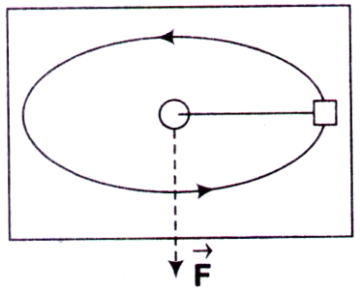A particle of mass m moves in a potential V(x) = $$\frac{1}{2}$$ mω2x2 + $$\frac{1}{2}$$ mμv2, where x is the position coordinate, v is the speed and ω, μ are constants. The canonical momentum of the particle is
A. p = m(1 + μ)v
B. p = mv
C. p = mμv
D. p = (1 - μ)mv
Answer: Option D
Join The Discussion
Comments (1)
Related Questions on Classical Mechanics
A. increases till mass falls into hole
B. decreases till mass falls into hole
C. remains constant
D. becomes zero at radius r1, where 0 < r1 < r0
A. $$\frac{c}{3}$$
B. $$\frac{{\sqrt 2 }}{3}c$$
C. $$\frac{c}{2}$$
D. $$\frac{{\sqrt 3 }}{2}c$$
The Hamiltonian corresponding to the Lagrangian $$L = a{{\dot x}^2} + b{{\dot y}^2} - kxy$$ is
A. $$\frac{{{p_x}^2}}{{2a}} + \frac{{{p_y}^2}}{{2b}} + kxy$$
B. $$\frac{{{p_x}^2}}{{4a}} + \frac{{{p_y}^2}}{{4b}} - kxy$$
C. $$\frac{{{p_x}^2}}{{4a}} + \frac{{{p_y}^2}}{{4b}} + kxy$$
D. $$\frac{{{p_x}^2 + {p_y}^2}}{{4ab}} + kxy$$
A. circular
B. elliptical
C. parabolic
D. hyperbolic


Very helpful for students.